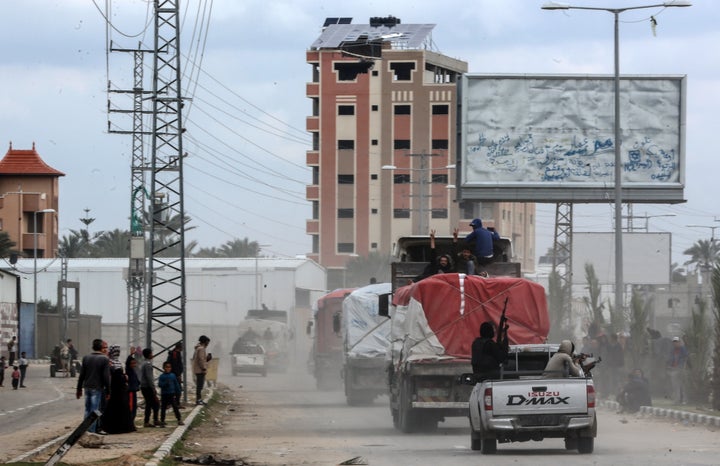How The U.S. Military Is Scrambling To Build A Floating Dock For Humanitarian
WASHINGTON (AP) — Even before President Joe Biden announced in his State of the Union address the plans for providing aid to Gaza by sea, the Army’s 7th Transportation Brigade and other units were scrambling to pull equipment together.
They received their orders before the speech: Build a floating dock off the Gaza coast to provide food and other desperately needed assistance to residents of Gaza. The aid is needed because Israel has sharply restricted land routes into Gaza, slowing the flow of aid to a trickle.
It’s a complex operation, involving as many as 1,000 U.S. troops, and it won’t happen overnight. Air Force Maj. Gen. Pat Ryder, the Pentagon press secretary, told reporters it will take weeks for this to come together. Some officials say it will take about two months. And beyond the logistical challenges, the operation will depend on Israel’s cooperation, which isn’t assured.
A look at what’s known about the operation.
WHY BUILD A FLOATING PIER?
In the five months since Hamas militants attacked Israel on Oct. 7, killing about 1,200 people and taking 250 others hostage, Israel’s military has battered the territory, killing more than 30,000 Palestinians, according to the Gaza Health Ministry. The result of the Israel-Hamas war is a devastating humanitarian catastrophe.
The U.N. says virtually all of Gaza’s 2.3 million people are struggling to find food, and more than a half-million currently face starvation. Many people have been reduced to eating animal fodder to survive.
Getting in food, medical supplies and other aid has been difficult, if not impossible at times, due to the ongoing hostilities and struggles to coordinate with the Israeli military, which has blocked routes and slowed deliveries due to inspections.

NurPhoto via Getty Images
Trucks carrying humanitarian aid have to drive from the Rafah crossing with Egypt or the Kerem Shalom crossing with Israel, both on the southern edge of Gaza, through the conflict zone to reach the largely cut-off areas in the north.
It’s been frustrating for the Biden administration as its efforts to step up aid to Gaza have been impeded by the obstacles posed by Israel, its close ally.
Last week, the U.S. began airdrops of aid for Gaza. But that can provide only a limited amount of aid and may not reach those who need it.
In his address Thursday, Biden directed the military to construct a temporary pier on Gaza’s coast “that can receive large ships carrying food, water, medicine and temporary shelters.”
Biden said the pier will “enable a massive increase in the amount of humanitarian assistance getting into Gaza every day.”
According to defense officials, the 7th Transportation Brigade based at Joint Base Langley-Eustis in Virginia is already starting to pull together what’s called the Joint Logistics Over The Shore (JLOTS) equipment and watercraft.
It’s like a huge LEGO system — an array of 40-foot-long (12-meter-long) pieces of steel that can be locked together to form a pier and causeway. The causeway would be up to 1,800 feet (nearly 550 meters) long and two lanes wide.
And in the coming days, U.S. troops will begin loading the equipment onto a large Military Sealift Command vessel. The equipment will include the steel pieces and smaller tug vessels that can help move things into place.
That loading isn’t likely to start until sometime next week, and once done the ship will set off across the Atlantic Ocean with members of the 7th Transportation Brigade aboard. A number of other military units from the U.S. and abroad will also be participating in the mission.
Ryder said the troops will build an offshore pier where large ships can offload food and supplies. Then smaller military vessels will transport that aid from the floating pier to the temporary causeway that will be driven into the ground at the shoreline.
Biden said Thursday that there will be no U.S. forces on the ground in Gaza for the mission, which will likely involve other allies, contractors and aid agencies.
A key question will be what Israel is prepared to do to support the aid delivery effort.

